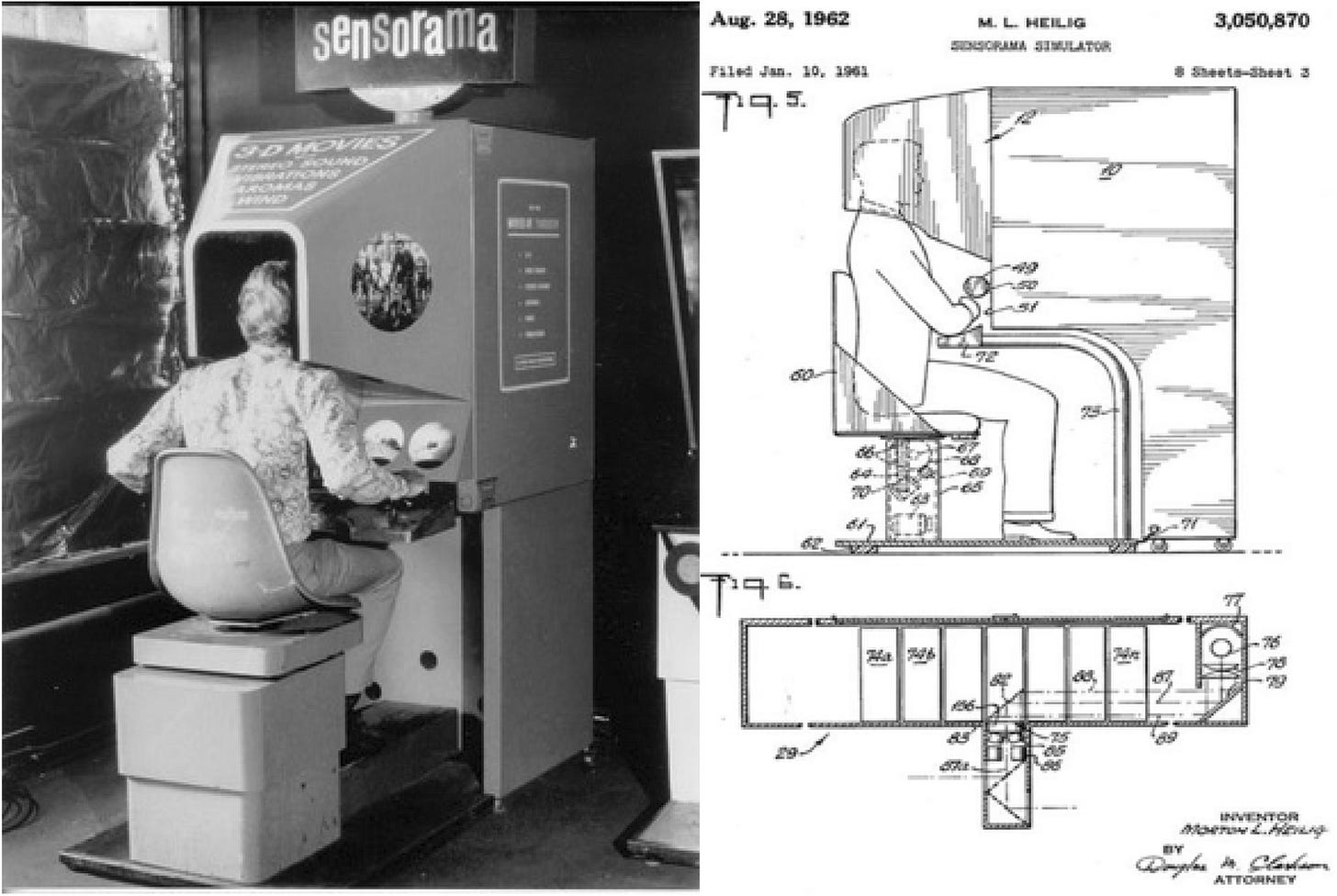#93 Designing virtual worlds
Human Joysticks and the Sensorama
Join Design Lobster #93 as we venture into virtual reality. From one of the disturbing new perils it might bring to a home-made 1950’s VR concept that included pizza smells – get those goggles on! 🥽
✨Enjoying Design Lobster? Please share it with a friend, colleague or fellow designer.
Question: What is a Human Joystick attack?
When we think about the dangers posed by virtual reality technologies, the conversation usually tends to focus on potential incursions into our privacy. Some of the criticism of Facebook’s recent reinvention as a virtual reality company has focussed on what data they might be able sell now they can see not only your social network, but also the contents of your home 🙀 But in the world of VR, even more insidious threats are possible.
Researchers at The University of New Haven Cyber Forensics Research and Education Group (UNHcFREG) were able to move VR players to a new position in the room they were playing simply by making small adjustments to their view in the gameworld they were inhabiting – a so-called Human Joystick attack. Scarily, the players had no knowledge this was happening. The research paints a disturbing picture of a future where people could be physically moved into positions of danger if their device gets hacked.
Thinking about the way designs can be abused as well as used doesn’t happen as much as it perhaps should. Designers have to spend a lot of time advocating for a particular vision of the future, and I think there can be a temptation to gloss over potential misuse. I think our visions could be even more compelling if we showed how our designs mitigate against bad behaviour, as well as facilitating good.
Design takeaway: How could your design be abused?
👀 This video shows how easy it is to move someone playing in VR without their knowledge
Object: The Sensorama

This arcade-style contraption – the jazzily named Sensorama – was designed in the 1950’s by an inventor called Morton Heilig and is widely considered to be one of the first examples of of a virtual reality device. A viewer would sit down at the seat and place their head into the hood to enjoy a stereoscopic 3D experience, augmented by surround sound, vibrations in the chair, wind from fans and even scents from emitters. Footage reels were normally around 3 minutes long, and the most well-known transported the viewer to a motorcycle ride in Brooklyn, complete with the smells of exhaust gases from buses and takeaway pizza.
Working without the benefit of computers, and propelled by an idiosyncratic (and rather prescient) vision of the future of entertainment, Mort built his mechanical invention mostly by hand. It wound a celluloid film reel to show the stereoscopic footage, with electric charges in the reel controlling the timing of vibrations and scents to immerse the viewer in what they could see on the screen.
"...without the active participation of the spectator there can be no transfer of consciousness, no art."
—Morton Heilig
Morton was passionate about the potential of telepresence to help deliver more powerful entertainment and education experiences, but his device was unreliable and expensive so it never won significant investment – despite his persistent efforts. In many ways it was much more ambitious than the current crop of VR devices, with their emphasis on vision over a fully multi-sensory experience.
Design takeaway: How could you make your design more immersive?
👃 Watch an interview with Morton
Quote: “Always design a thing by considering it in it’s next-larger context. A chair in a room, a room in a house, an environment in a city plan.”
– Eliel Saarinen
This quote comes from legendary Finnish architect and designer Eliel Saarinen, who designed everything from postage stamps to Helsinki railway station. I thought this quote would provide an interesting perspective on the virtual environments we’ve talked about this week.
Keep it real,
Ben 🦞
Enjoyed this week’s Design Lobster? Let me know by clicking the heart button.
👇



I'm surprised I've never heard of David Rose and Enchanted Objects. I'm going to grab a copy. I'm glad I've found you on here. I'm also a designer.
In all honesty, I am slightly frightened by the idea of virtual worlds becoming more commonplace and the viscerality of life becoming more and more of an afterthought.
thats nice, you should also visit this page http://news.unair.ac.id/2020/10/02/internasionalisasi-digitalisasi-dan-informasi-di-tangan-dokter-yang-konsisten-meneliti/